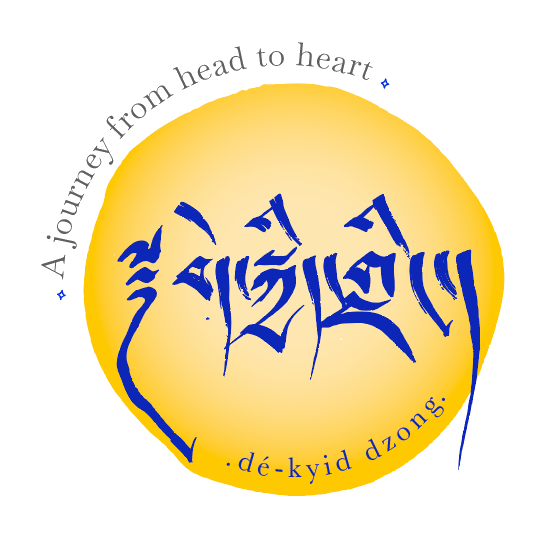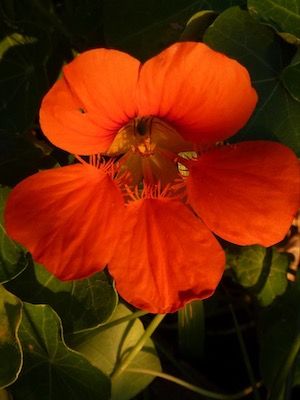Nasturtium
I- Nomenclature
Latin name: Tropaeolum majus L.
Family : Tropaeolaceae
Common names: Garden Nasturtium, Indian Cress or Monks Cress
Etymology
"Plant like watercress" from L. nasturtium "cress"; the popular etymology explanation of the name (Pliny) is that it is from L. nasitortium, lit. "nose-twist," from 'nasus' "nose" + pp. of 'torquere' "to twist"; the plant so called for its pungent odor. The name was first used for the South American trailing plant with orange flowers with which it is now commonly associated in 1704.
II- Legends and traditions
Das Elisabeth Linné-Phänomen, or the Elizabeth Linnæus Phenomenon, is the name given to the phenomenon of "flashing flowers". Especially at dusk, the orange flowers may appear to emit small "flashes". Once believed to be an electrical phenomenon, it is today thought to be an optical reaction in the human eye caused by the contrast between the orange flowers and the surrounding green. The phenomenon is named after Elisabeth Christina von Linné, one of Carl Linnaeus's daughters, who discovered it at age 19. (https://en.wikipedia.org/wiki/Tropaeolum_majus)
III- Botanical description
Description: Herbaceous annual or bi-annual plant with ramified, 4 to 5 metre long trailing stems.
It has large, flat, alternate, disk-shaped leaves with long stems.
The funnel-shaped flowers are red, orange or yellow with 5 petals. Nasturtiums flower from June to September.
The plant produces seed pods in autumn.
Nasturtiums have 25 - 30 cm long tuberous roots that taper at both ends.
Habitat: Native of Peru and Northern Chile, the plant is vivacious in the Andes and annual in temperate climates.
Harvest: Harvest leaves and flowers when the plant is in flower.
Harvest seed pods in September.
Pars used : Buds, flowers and seeds.
IV- Active ingredients
|
Flowers |
|
• Glucosinolates: glucosinolate, benzyl isothiocyanate • Flavonoids: isoquercitrin • Abundant vitamin C, Sulfur (0,17%) Organic acids, essential oil, potassium sulfate |
V- Therapeutic uses
Properties
|
Flowers |
||
|
Indications
Nasturtium flowers relieve bronchitis and coughing fits.
The hair lotion is used in cases of hair loss as it helps re-growth and tonifies the scalp.
Dosage
Infusion: leaves or flowers to enhance resistance to infections, reduce mucous and bronchial infections. Infuse 30 gr of leaves or flowers in a liter of water for 10 minutes. Drink 2-3 cups a day.
Hair lotion:
200gr of seeds and fresh flowers.
200gr fresh stinging nettle leaves.
200gr fresh box leaves.
Place all the ingredients in 1 litre of 90° alcohol. Leave to macerate for 15 days. Us
e a coffee filter to filter the lotion.
Add 2 drops of geranium and 2 drops of ginger essential oils.
Use daily on the scalp.
VI- Precaution of use
Contraindication
None known.



